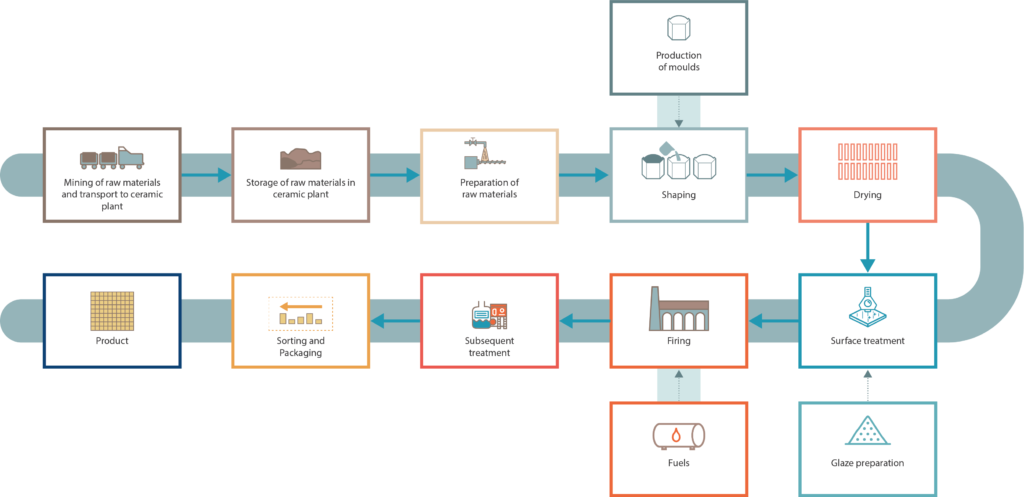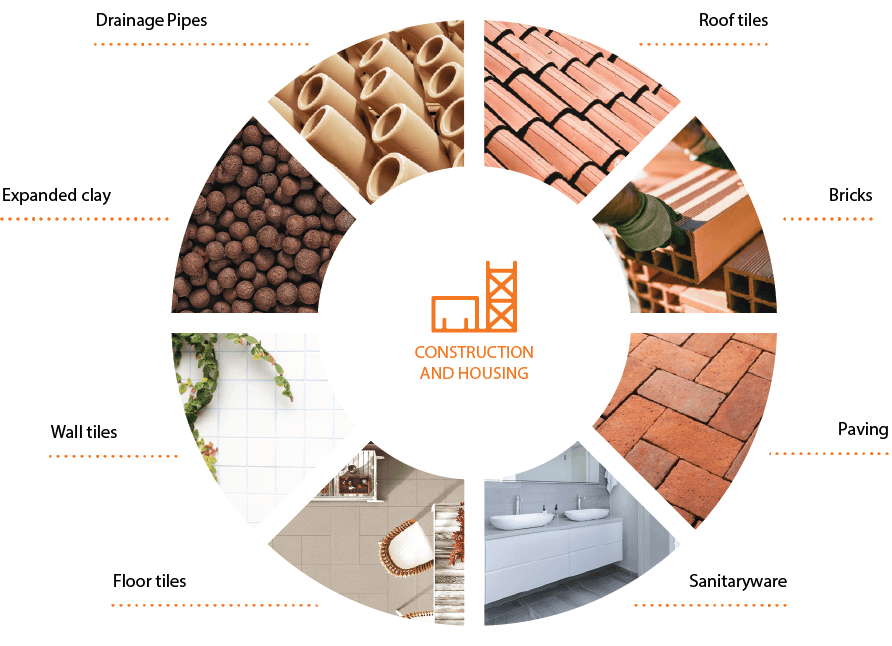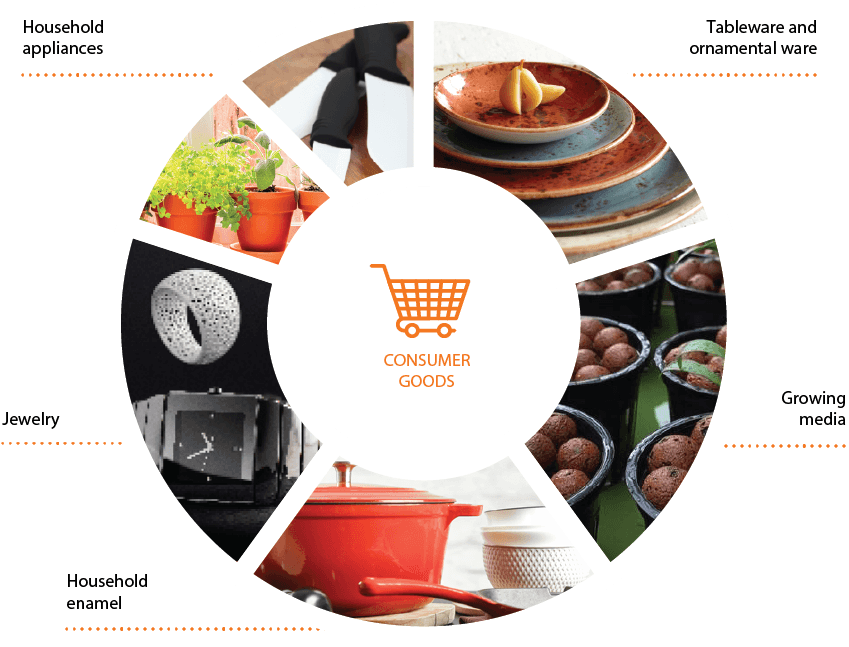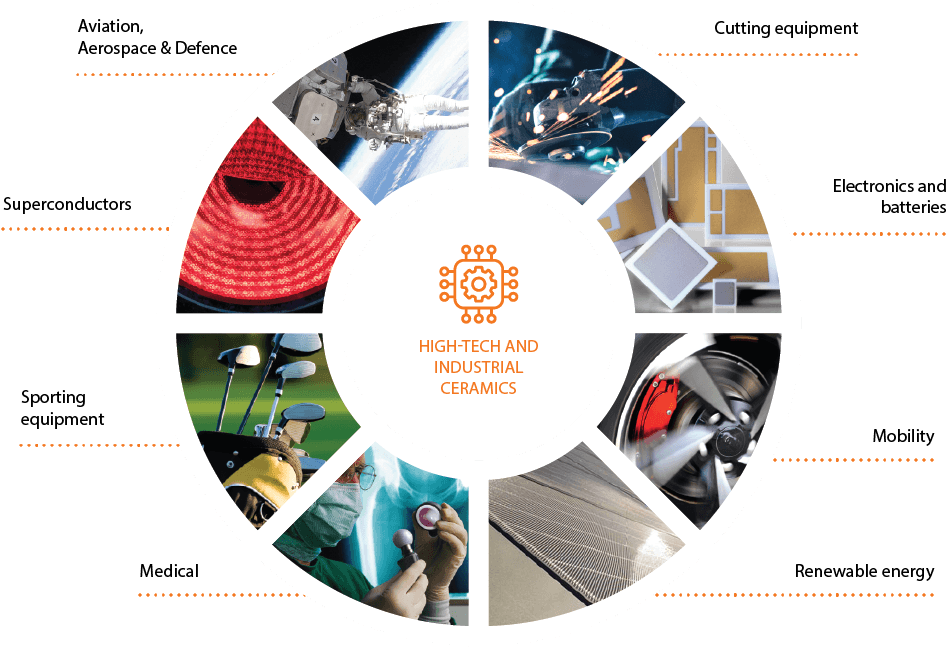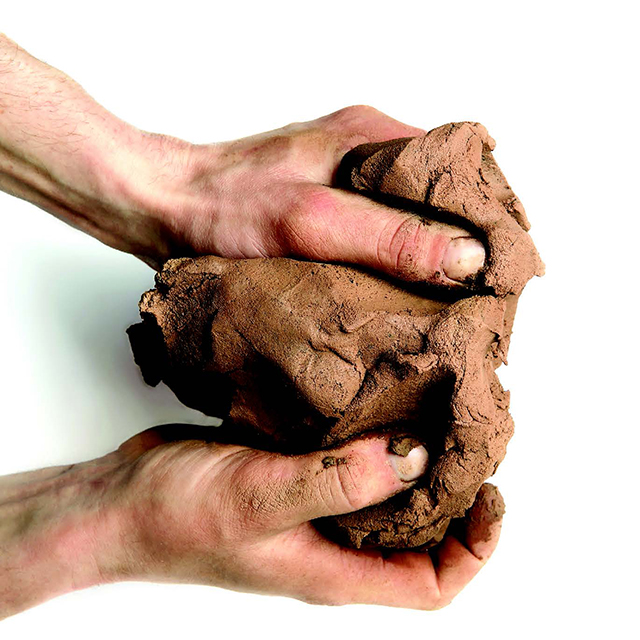What are Ceramics
Ceramic Roadmap
TO 2050
Ceramics encompass such a vast array of materials, manufacturing methods and applications that a precise definition is hard to pin down.
From a chemical point of view, ceramics are defined in terms of what they are not. They are non-metallic and inorganic solids – in other words, what we are left with when we take away metals and organic materials.
For many people, ceramics mean things like tableware, roof tiles, flowerpots, coffee cups, bricks in a fireplace, or a pizza oven or tiles on a kitchen wall. These products are known in the industry as traditional ceramics.
But beyond these everyday household items, there exist various other cases where ceramics are used.
Refractories as a part of ceramics are used as a refractory material because of their resistance to heat, mechanical stress or chemicals. Since they keep their shape and strength at high temperatures, they are used in all extreme-temperature industrial processes, primarily in metallurgical processes but also cement, glass, energy, chemical processes and more. Refractory ceramics are constantly innovating in close cooperation with these high-temperature processes to support their transformation, and a strong and autonomous European industry cannot be conceived without refractories.
Technical ceramics are considered to be one of the most efficient materials of our time. They are applied in many industries and include established products, such as insulators, engine parts, catalyst carriers, bone replacement, filters, and many others.
Technical ceramics are an active contributor to the well-being and construction of a resilient, carbon-neutral European society, and to achieving the goals and objectives of the EU Green Deal.
Technical ceramic components can tolerate higher temperatures and loading forces with a significant increase in the number of successful run cycles when compared to traditional materials. This means a considerable enhancement of efficiency, which is often a key factor in the indication of sustainability.
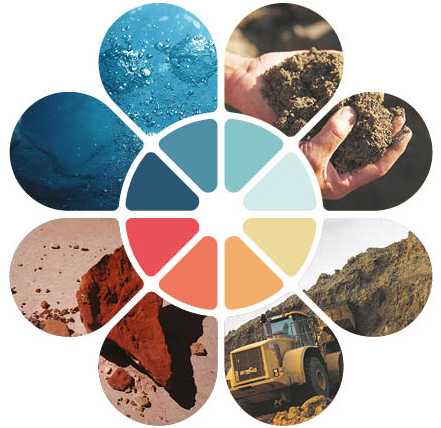
Advanced ceramics continuously play a significant role in clean energy production, from specialised piezoelectric systems for solar exchangers to solid oxide fuel cells and high-temperature roller bearings in high-efficiency wind turbines.
Innovative transformations in additive manufacturing of technical materials facilitate the manufacture of more complex, long-lasting systems for hyper-efficiency energy conversion systems.
How are ceramics made?
Raw Materials
Ceramics are made mainly from mined materials (such as clay, bauxite, magnesite), water, fire and air. The main raw material is clay, a resource available in large quantities. Technical ceramics and refractories and are made from a huge variety of raw materials such as aluminium oxide (more commonly known as alumina), magnesia, graphite, corundum and silicon carbide.
Manufacturing process
Ceramics are generally made by taking raw materials, adding additives, powders, and water, then shaping them into forms, which are dried and fired in a high-temperature oven known as a kiln.
This process creates commercial products that are diverse in size, shape, detail, complexity, material composition, structure and cost.
Ceramic products that use naturally occurring rocks and minerals as a starting material must undergo special processing in order to control purity, particle size and particle size distribution.
These attributes are integral to the final properties of the finished ceramic.
Chemically prepared powders are also used as starting materials for some ceramic products. These synthetic materials can be controlled to produce granules or powders with precise chemical compositions and particle size.
The next step is to form the ceramic particles into a desired shape. This is accomplished by the addition of water/steam and/or additives such as binders, followed by a shape-forming process.
Some of the most common forming methods for ceramics include pressing, slip casting, extrusion, tape casting and injection moulding. More recently, we have observed a growing use of ceramic 3-D printing in technical ceramic applications with benefits not only in terms of functionalities but also in terms of resource efficiency.
The products are dried and heated to produce a rigid, finished product. Some ceramic products such as electrical insulators, dinnerware and tiles may then undergo a glazing process. Ceramics for advanced applications may undergo a machining and/or polishing step to meet specific engineering design criteria.
